InnerWireless 40001A001 Spot Radio Frequency Location System - Beacon User Manual UsersManual
InnerWireless, Inc. Spot Radio Frequency Location System - Beacon UsersManual
User Manual
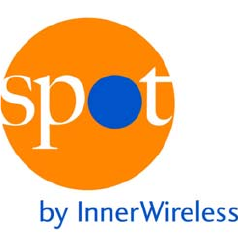
Spot RFLS User's Manual
November 6, 2006
1155 Kas Drive, Suite 200
Richardson, TX 75081
(972) 479-9898 Phone
(972) 479-9625 Fax
techsupport@innerwireless.com
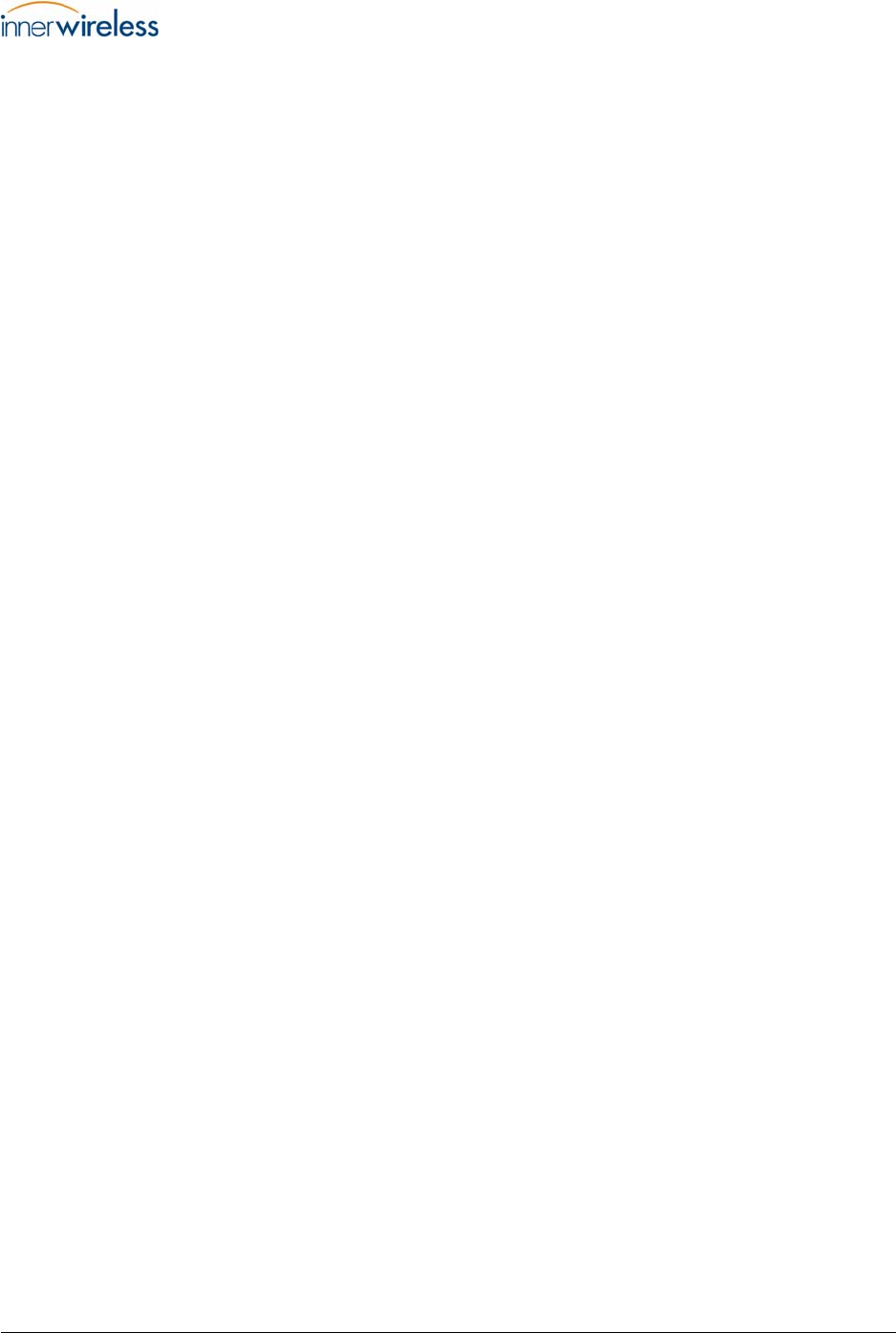
Spot RFLS User's Manual Page 2
11/6/2006
Table of Contents
1 Safety Information...................................................................................................... 4
2 Spot System Description............................................................................................ 5
3 Using the Web-Based Interface ................................................................................. 8
3.1 Login.............................................................................................................................8
3.2 My Account.................................................................................................................10
3.3 List Tags .....................................................................................................................11
3.4 Log Out.......................................................................................................................15
Appendix A – Master Radio FCC Compliance Information............................................ 16
Appendix B – Beacon FCC Compliance Information..................................................... 17
Appendix C – Tag FCC Compliance Information .......................................................... 18
Appendix D – Antenna Specification ............................................................................. 19
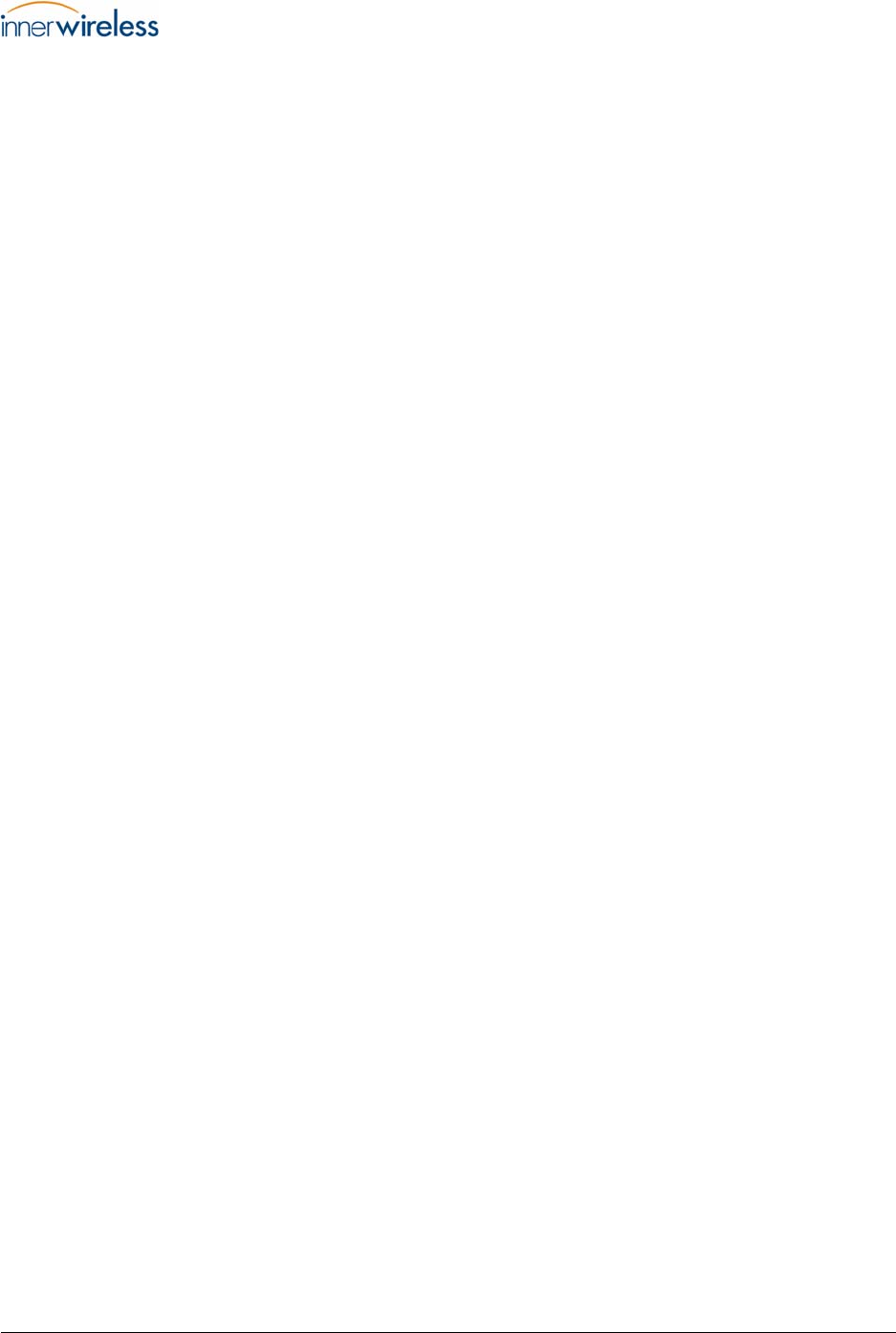
Spot RFLS User's Manual Page 3
11/6/2006
List of Figures
Figure 1 — Spot RFLS Block Diagram .........................................................................................................6
Figure 2 — Spot Engine Administration Login Window................................................................................8
Figure 3 — Spot Engine Administration Welcome Window..........................................................................9
Figure 4 — My Account Window.................................................................................................................10
Figure 5 — List Tags Window.....................................................................................................................11
Figure 6 — Tags > Maps Window...............................................................................................................12
Figure 7 — Tags > History Window ............................................................................................................13
Figure 8 — Sample Tag Location History...................................................................................................14
Figure 9 — Log Out Window.......................................................................................................................15
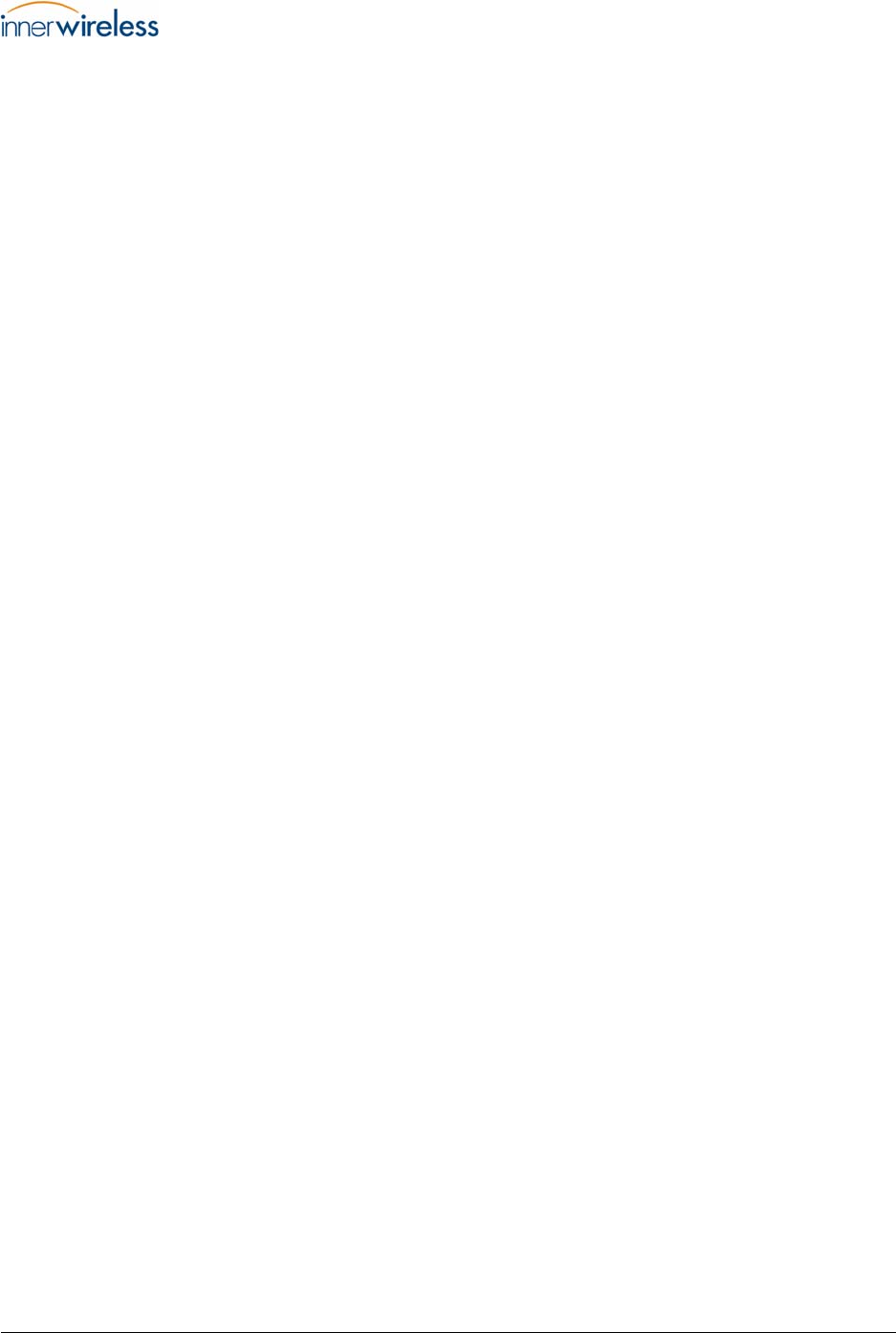
Spot RFLS User's Manual Page 4
11/6/2006
1 Safety Information
In order to comply with FCC Radio Frequency (RF) exposure limits, Spot RFLS antennas must
be located no closer to the human body than the distances specified below:
• Master Radio: 4.41 cm
• Beacon: 0.097 cm
• Tag: 0.06 cm
The Master Radio is intended for indoor use only unless used in an appropriately rated
environmental enclosure. The Master Radio’s antenna, power supply, and data cables must be
indoors at all times. Data cables must be terminated indoors with certified equipment (i.e.
switch, hub, etc.) if outdoor communication is desired.
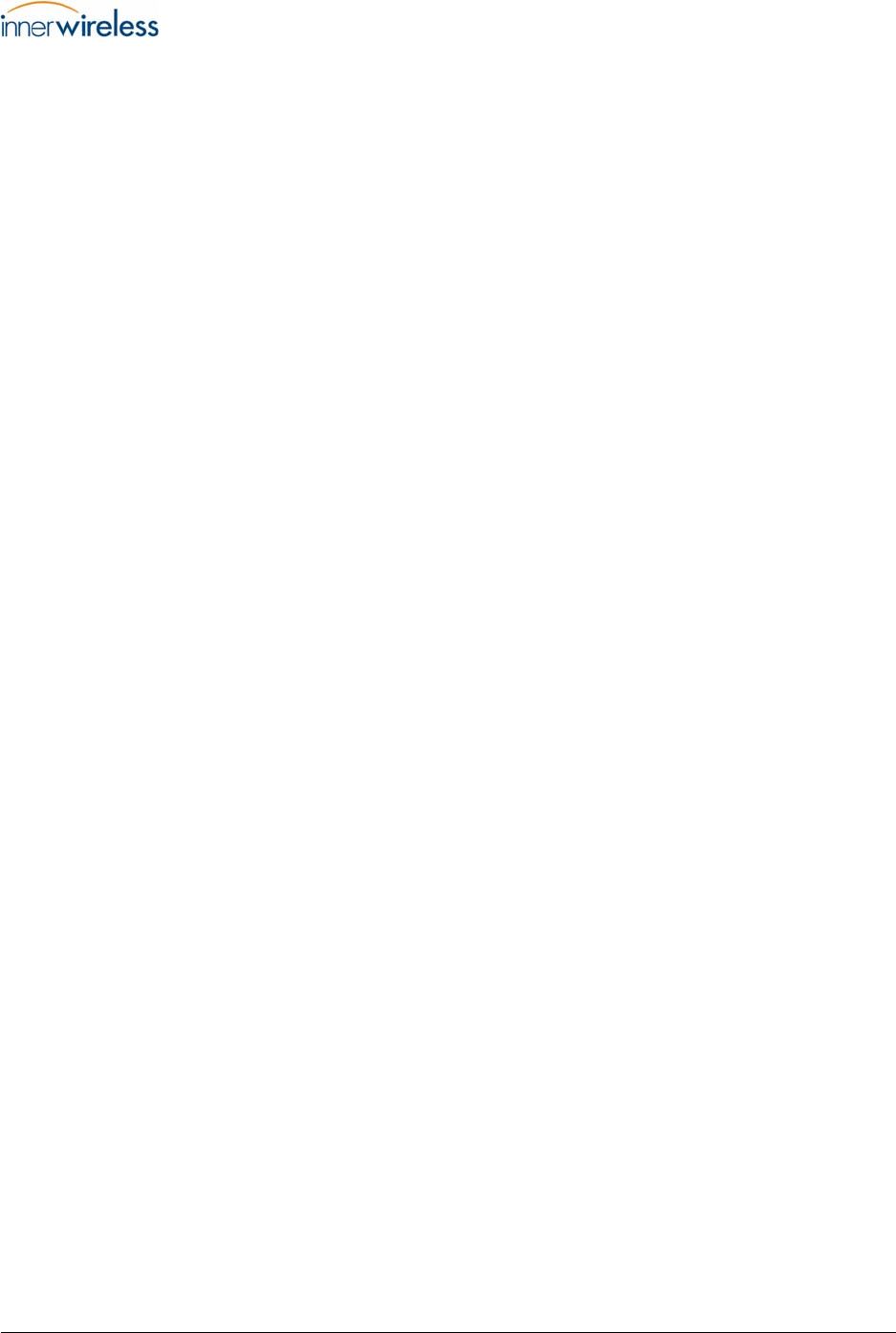
Spot RFLS User's Manual Page 5
11/6/2006
2 Spot System Description
This document describes the use of the Spot RFLS, a Radio Frequency (RF) Tag Location
System used for real-time and historical location tracking of high-value human and equipment
assets.
Major sections of this document include the following topics:
• A basic description of the Spot System and its proper use
• Safety information
• User interface description
• FCC ID numbers and compliance statements
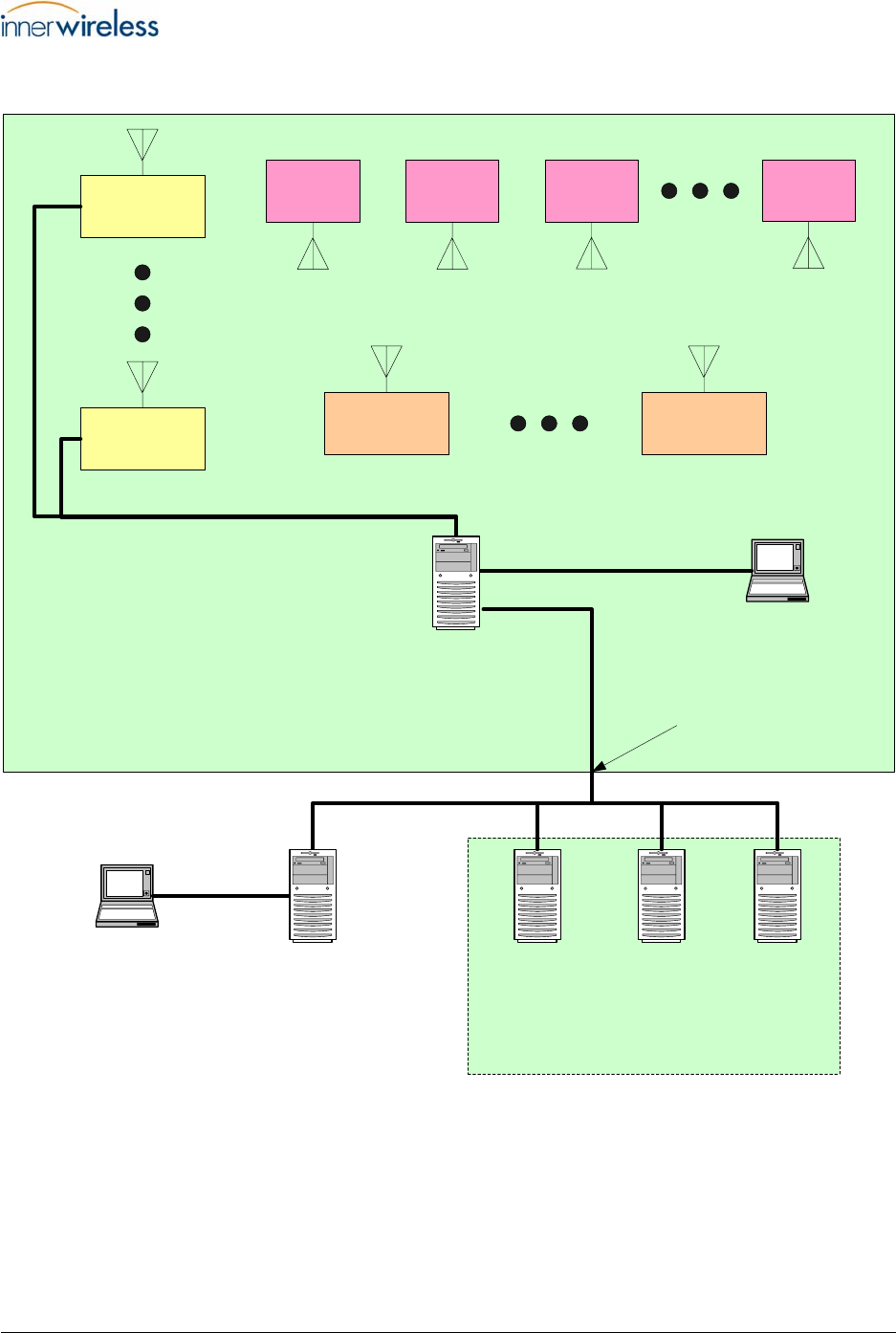
Spot RFLS User's Manual Page 6
11/6/2006
A block diagram of Spot RFLS is shown below:
Tag
Radio
Master
Radio
Tag
Radio
Beacon
Radio Beacon
Radio
Beacon
Radio
Beacon
Radio
Master
Radio
External Location
Data Interface
(API)
Browser-Based
Administration
Inventory
Management
System
Patient
Monitoring
System
Time and
Attendance
System
Hospital Systems
End Users
Spot Engine
(Network Controller)
SpotIt
Presentation Server
Figure 1 — Spot RFLS Block Diagram
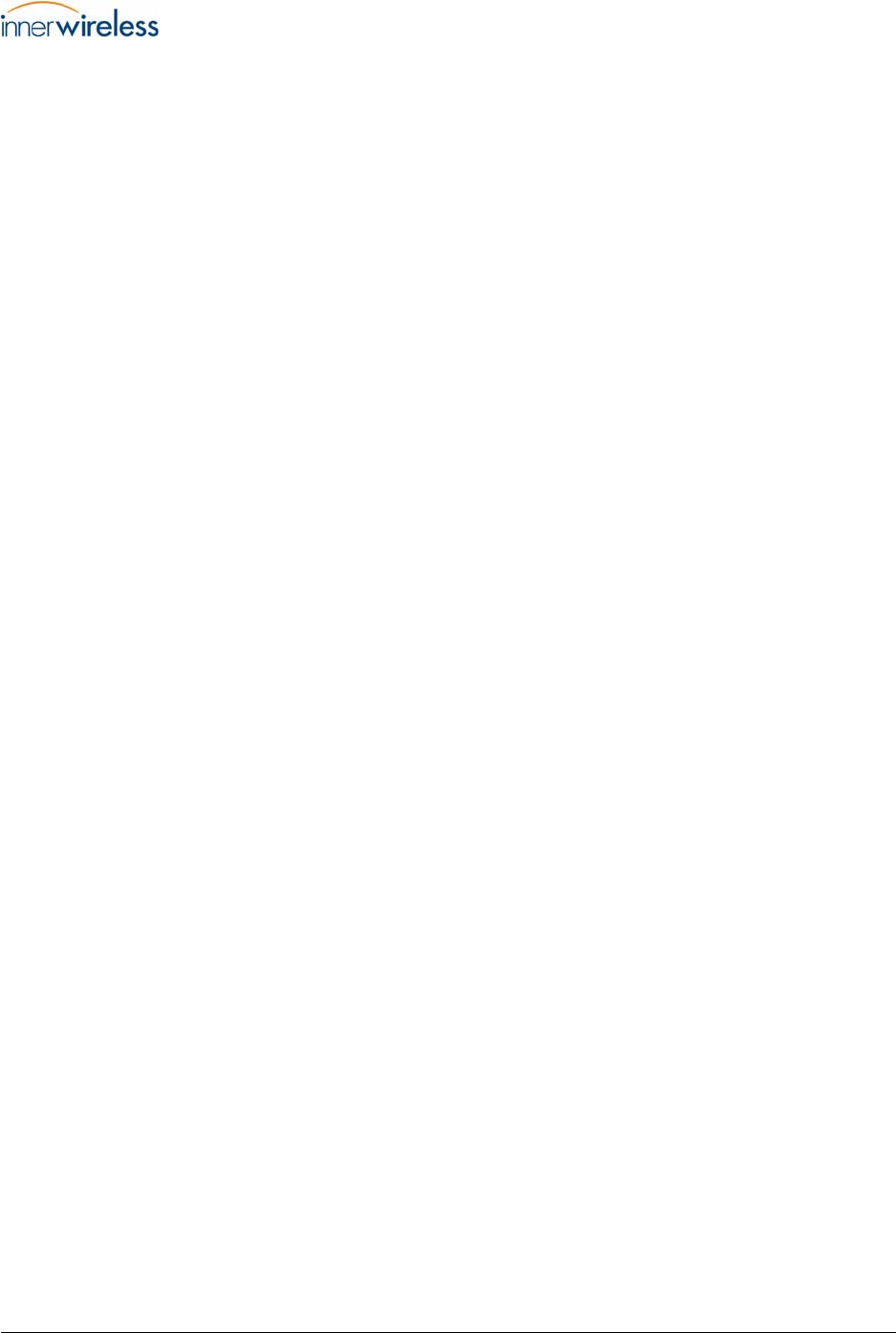
Spot RFLS User's Manual Page 7
11/6/2006
Spot uses a system of Master Radios and Beacons to locate and track the position of Tags.
Tag location and history information is made available to other systems and applications through
the External Location Data Interface (also called API) and also through a browser-based
interface.
The Spot System is made up of the following components.
• Spot Engine:
o An appliance that controls the overall operation of the Spot System and
delivers Tag location information via a web-based interface
o Other application servers can retrieve Tag location information through the
Engine’s External Location Data Interface (API)
CAUTION! Never operate a Master Radio without an antenna or RF load.
• Master Radios:
o Relay information from Beacons and Tags to the Spot Engine
o Are powered via their Ethernet network connections
o Require no direct user operation
• Beacons:
o Communicate with the Tags based on commands from the Master Radios
o Are battery-powered, designed for low current consumption to maximize
battery life
o Require no direct user operation
• Tags:
o Receive transmissions from Beacons
o Transmit Beacon reports to Master Radios that Spot uses to compute
location
o Are optimized for low power consumption to maximize battery life. Power
consumption can be optimized for tracking mobile or fixed assets.
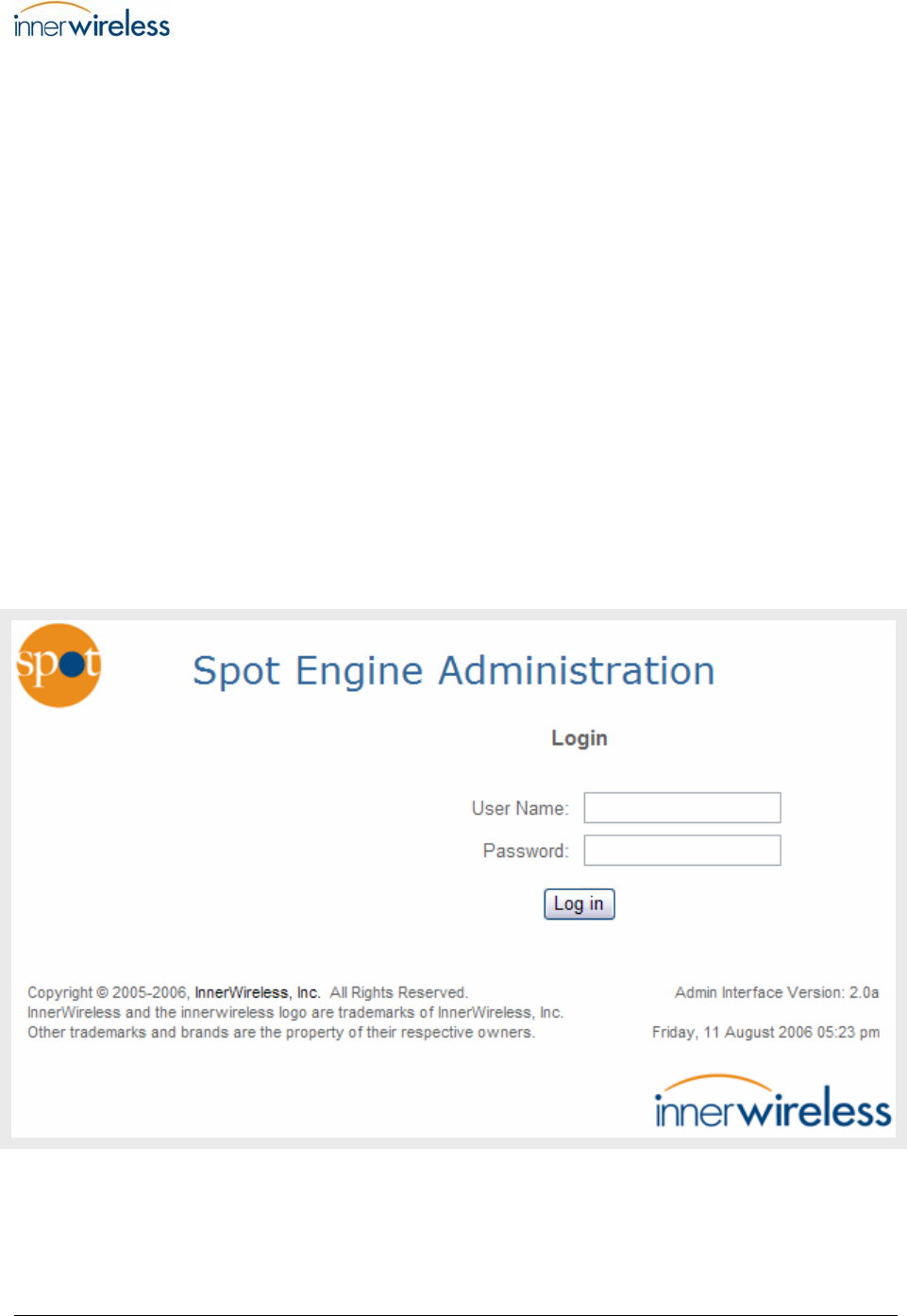
Spot RFLS User's Manual Page 8
11/6/2006
3 Using the Web-Based Interface
The user-level interface of the Spot System is accessed through a web browser. It provides a
basic level of access to the Spot System through the Spot Engine Administration web interface.
NOTE: Your Spot System Administrator must create an account for you to access
this functionality.
Most users will use other third-party applications (not the basic user
interface described here) to access the information collected by the Spot
System.
3.1 Login
Using a PC attached to the same local network (LAN) as the Spot Engine, log into the Spot
Engine Administration web interface as follows.
In your web browser, enter the URL for the Engine’s web interface you received from your Spot
System Administrator when your user account was created.
The login window is displayed as shown in the following figure.
Figure 2 — Spot Engine Administration Login Window
Enter your User Name and Password and click Log in.
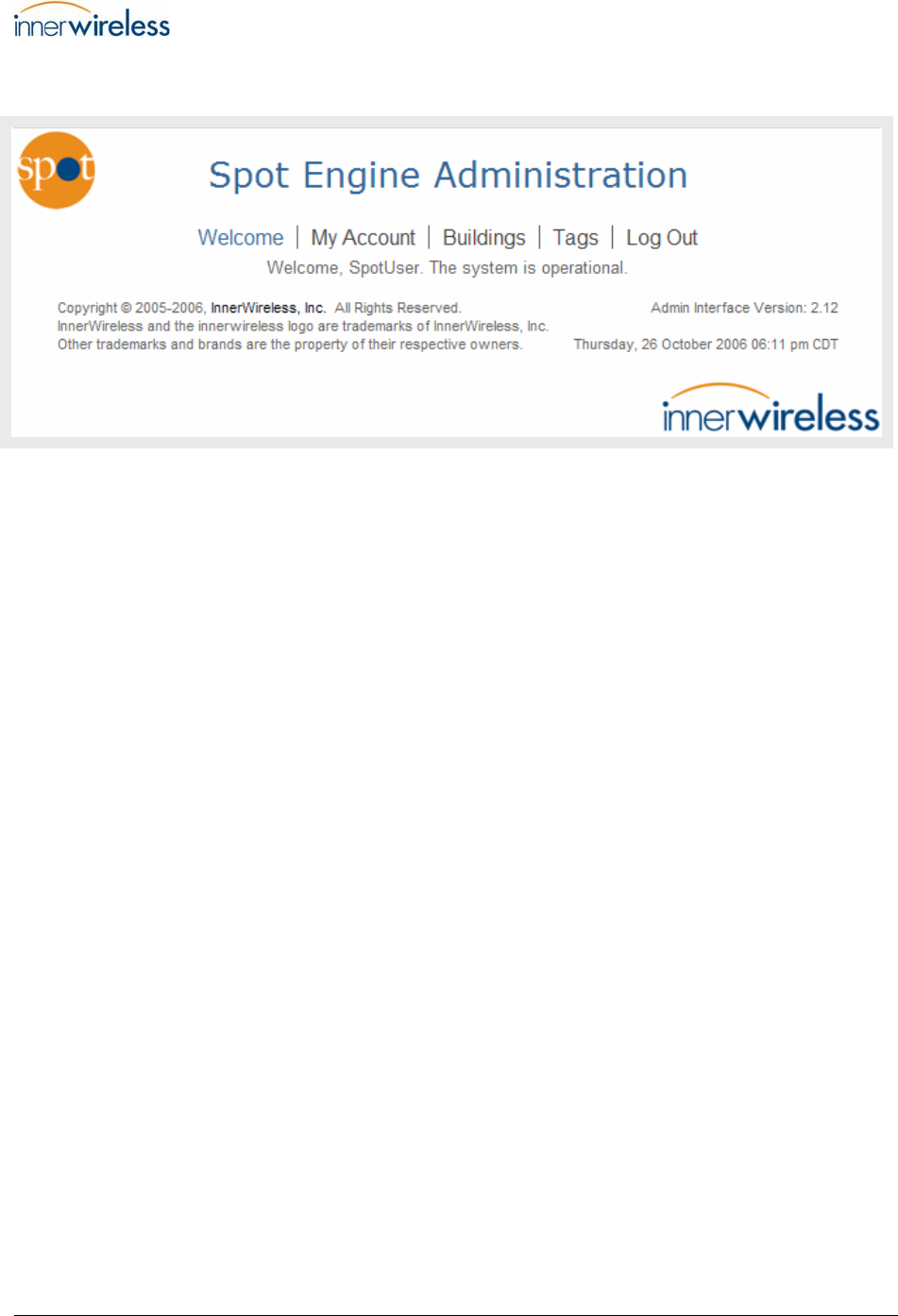
Spot RFLS User's Manual Page 9
11/6/2006
The Welcome window is displayed as shown in the following figure.
Figure 3 — Spot Engine Administration Welcome Window
The Welcome window indicates your login name, in this example SpotUser, and that The
system is operational.
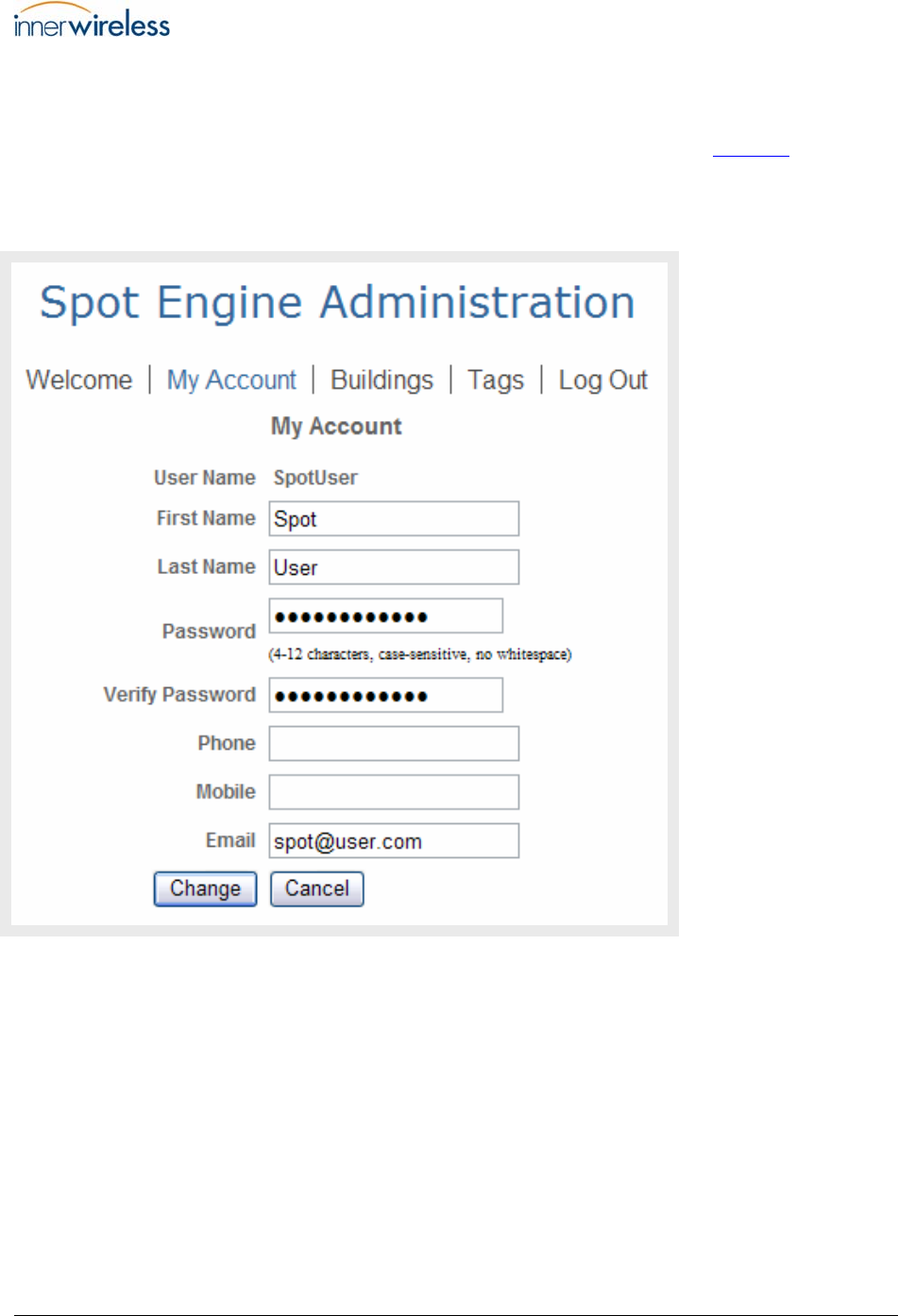
Spot RFLS User's Manual Page 10
11/6/2006
3.2 My Account
From the Spot Engine Administration > Welcome window shown in Figure 3 on page 9,
click My Account.
The following window is displayed.
Figure 4 — My Account Window
Make changes to your personal information as required and click Change to save.
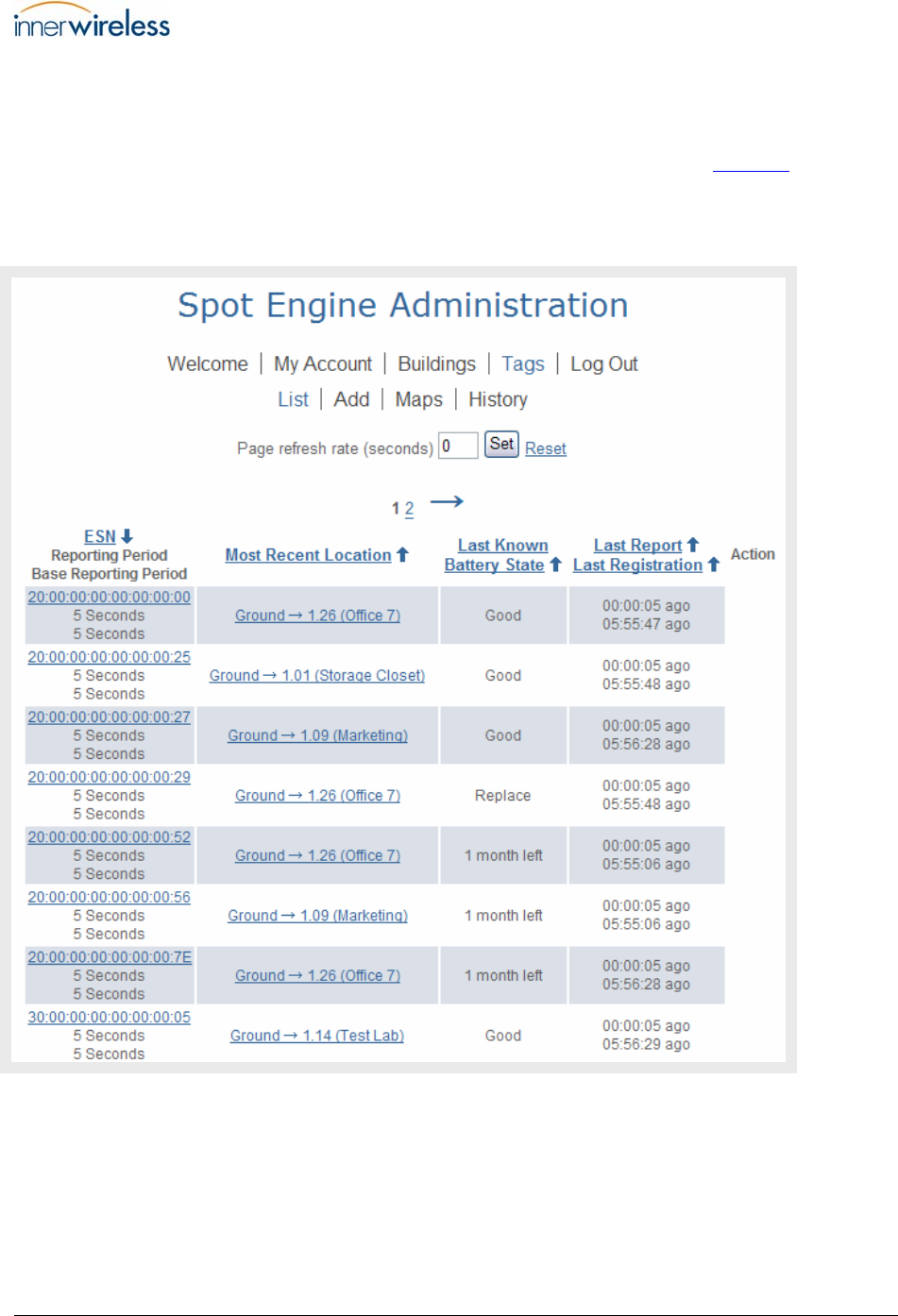
Spot RFLS User's Manual Page 11
11/6/2006
3.3 List Tags
From the Spot Engine Administration > Welcome window shown in Figure 3 on page 9,
click Tags > List.
The following window is displayed.
Figure 5 — List Tags Window
Click the link in the ESN column of the Tag you wish to track.
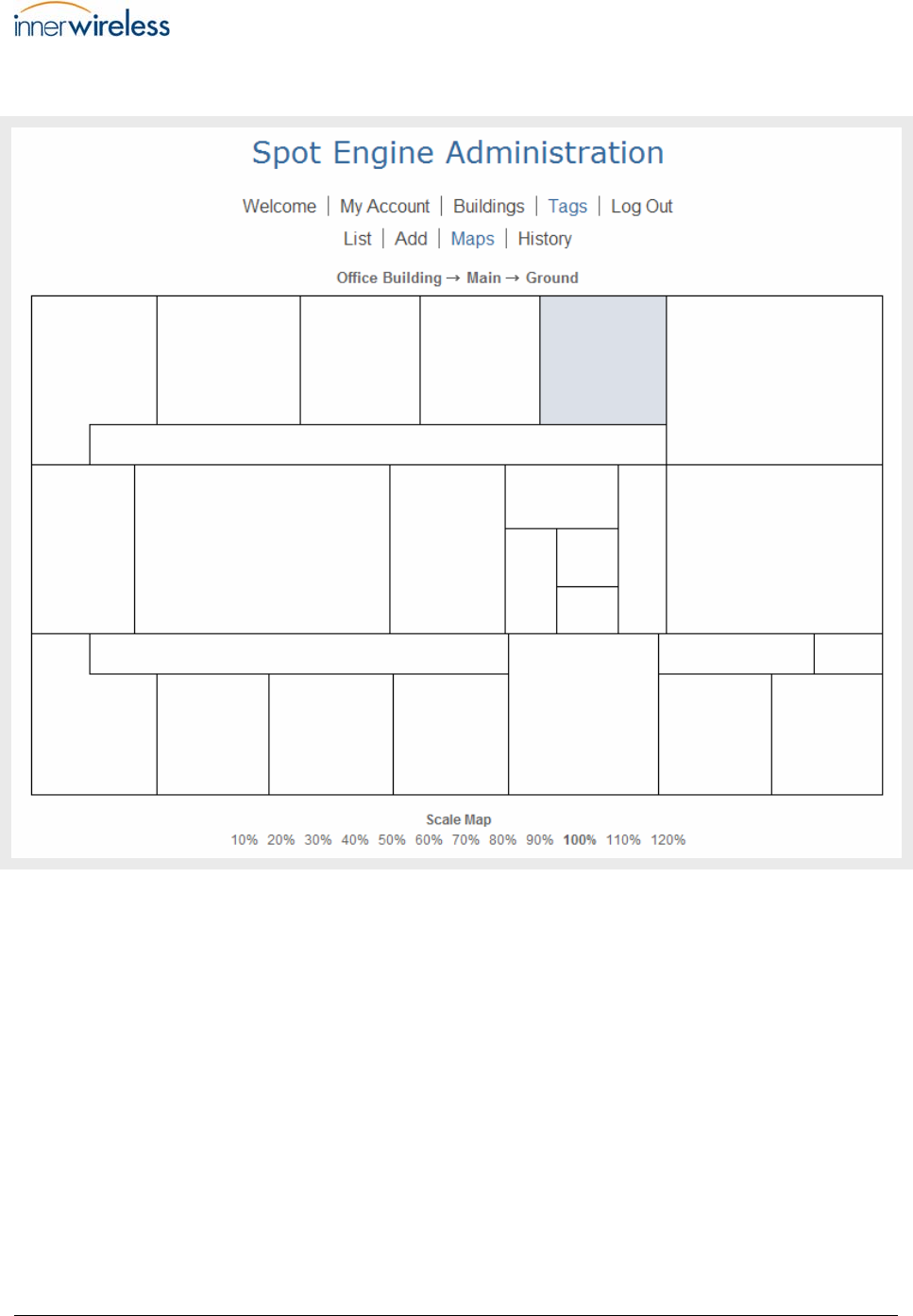
Spot RFLS User's Manual Page 12
11/6/2006
A view similar to the following figure is displayed.
Figure 6 — Tags > Maps Window
A map is displayed (Tags > Maps window). The blue square indicates Tag location.
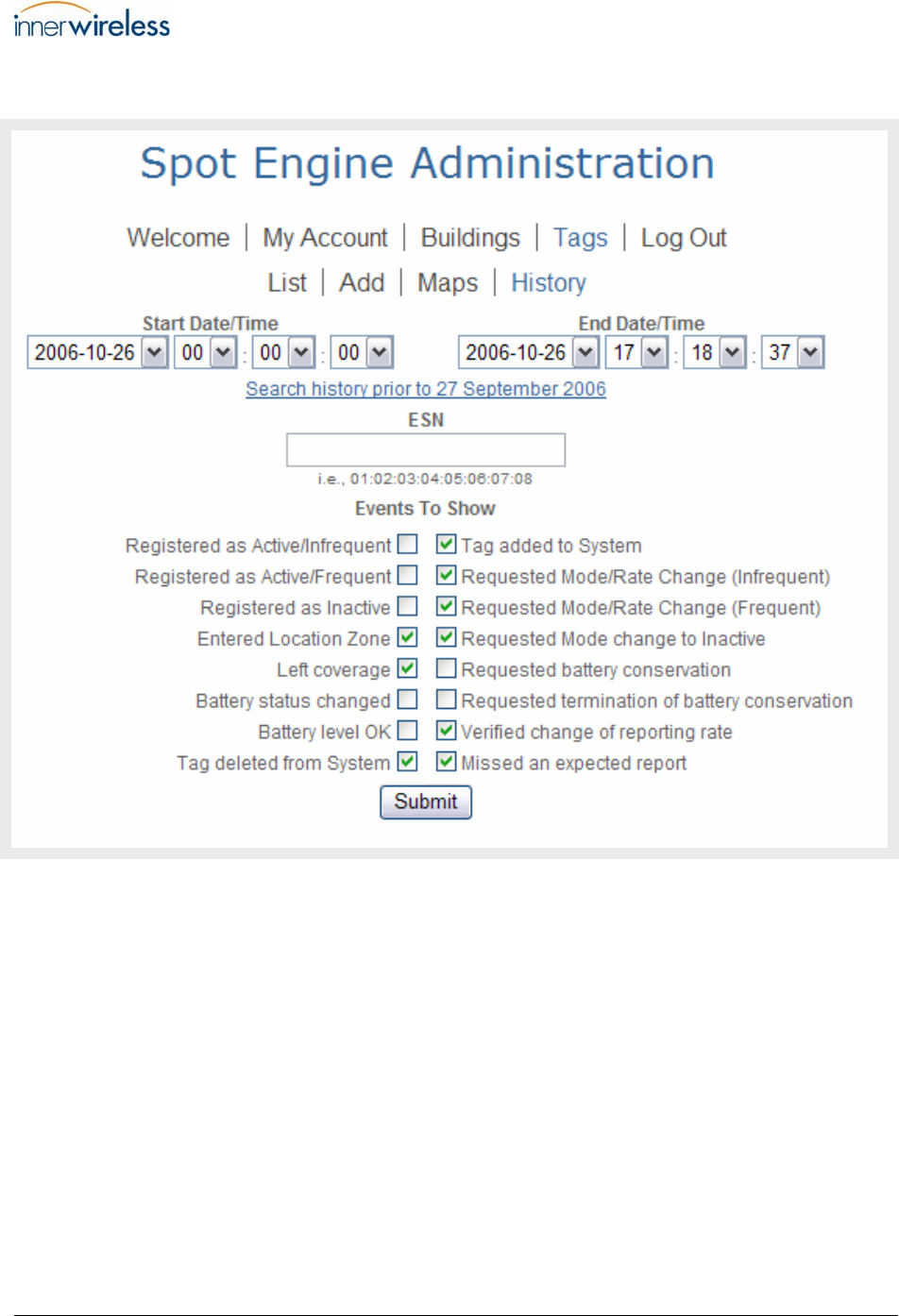
Spot RFLS User's Manual Page 13
11/6/2006
Click History to display the following window.
Figure 7 — Tags > History Window
Use the options in this window to recall the location history of a particular Tag.
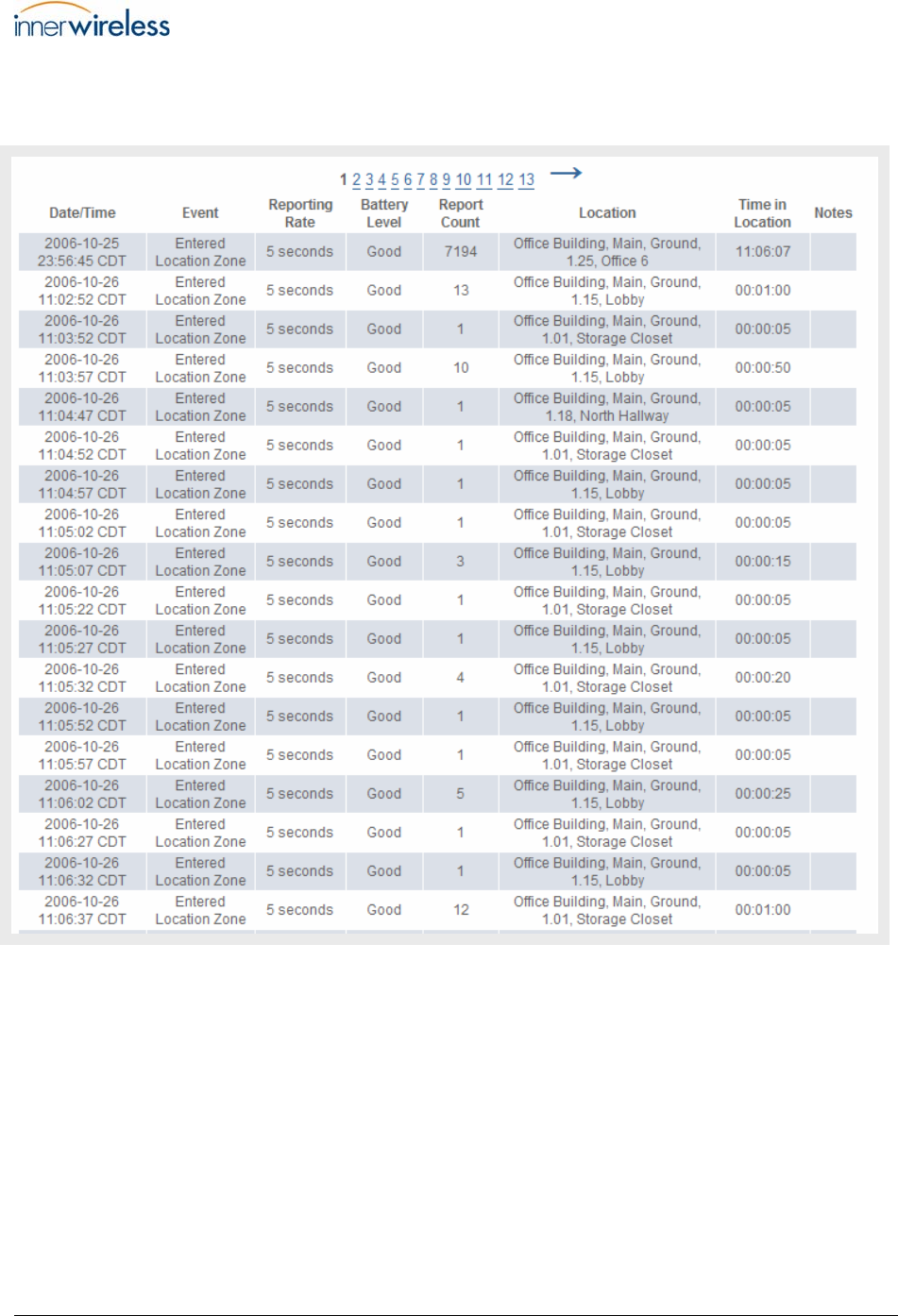
Spot RFLS User's Manual Page 14
11/6/2006
When you have selected your Events To Show, click Submit to display the location history
of the Tag in question.
Figure 8 — Sample Tag Location History
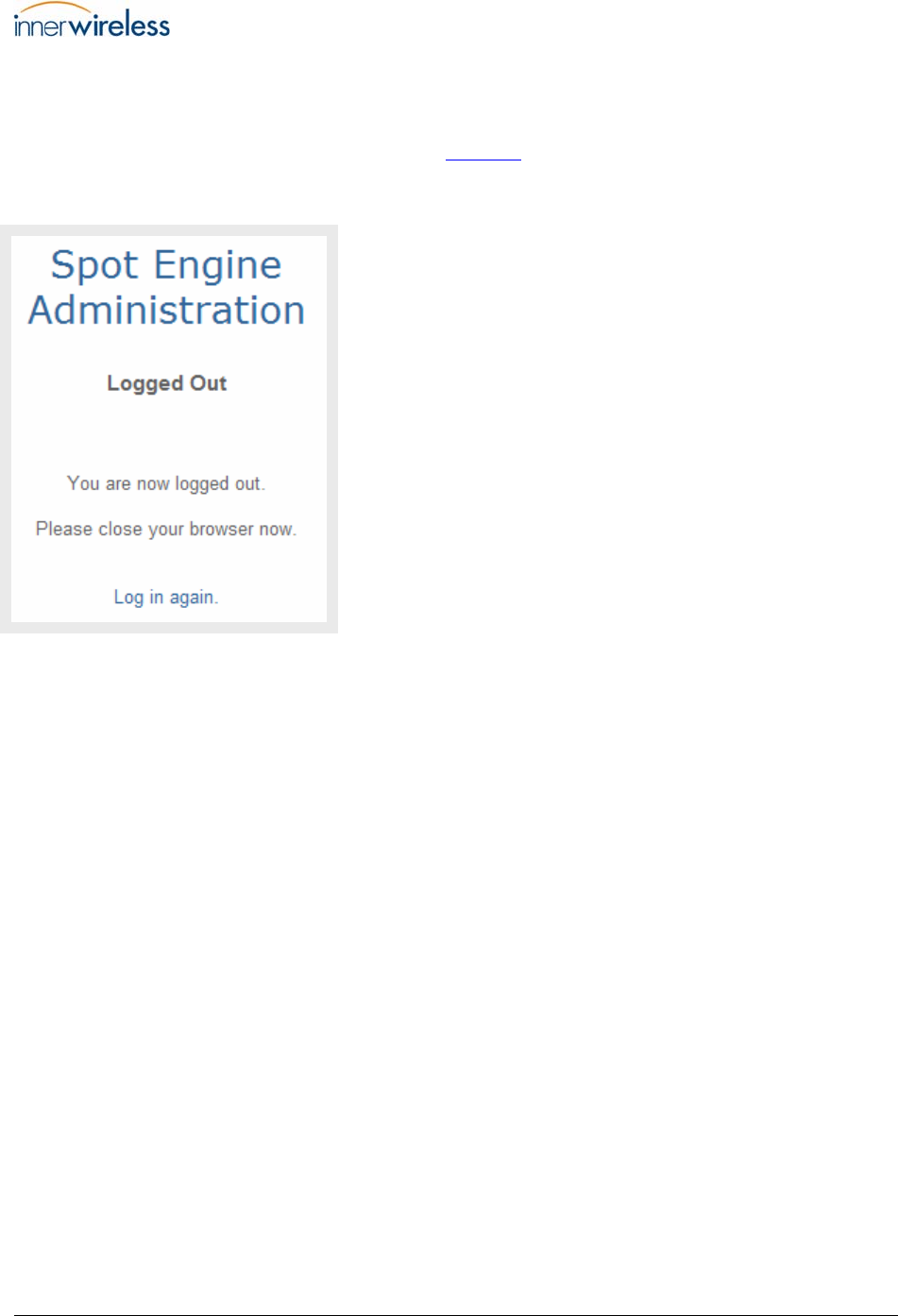
Spot RFLS User's Manual Page 15
11/6/2006
3.4 Log Out
To end your session, click Log Out shown in Figure 3 on page 9.
The following window is displayed.
Figure 9 — Log Out Window
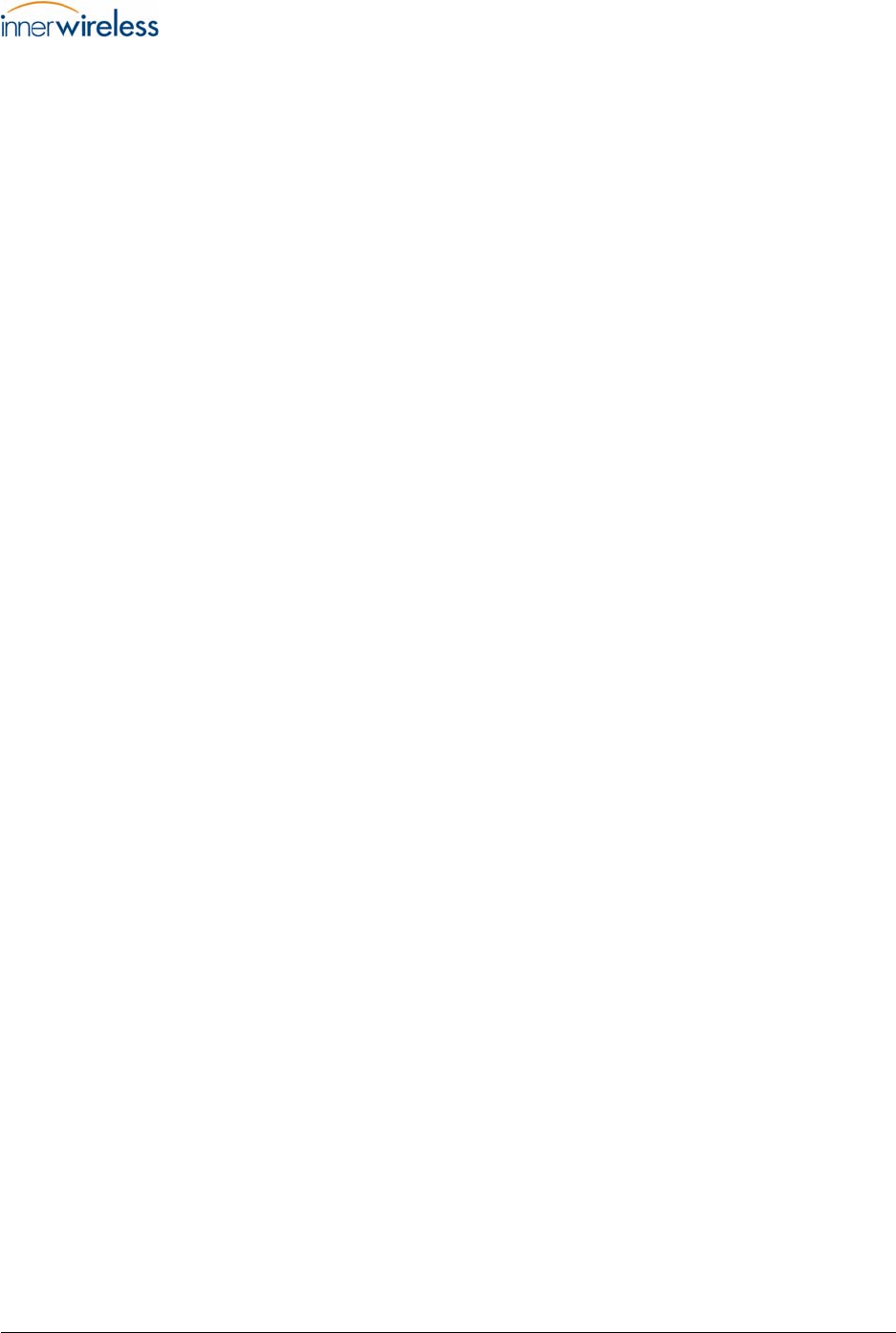
Spot RFLS User's Manual Page 16
11/6/2006
Appendix A – Master Radio FCC Compliance
Information
Master Radio FCC ID: RO540004A001
This device complies with Part 15 of the FCC Rules. Operation is subject to the following two
conditions:
1. This device may not cause harmful interference, and
2. This device must accept any interference received, including interference that may cause
undesired operation.
This equipment has been tested and found to comply with the limits for a Class A digital device,
pursuant to Part 15 of the FCC Rules. These limits are designed to provide reasonable protection
against harmful interference when the equipment is operated in a commercial environment. This
equipment generates, uses, and can radiate radio frequency energy and, if not installed and used
in accordance with the instruction manual, may cause harmful interference to radio
communications. Operation of this equipment in a residential area is likely to cause harmful
interference in which case the user will be required to correct the interference at his own
expense.
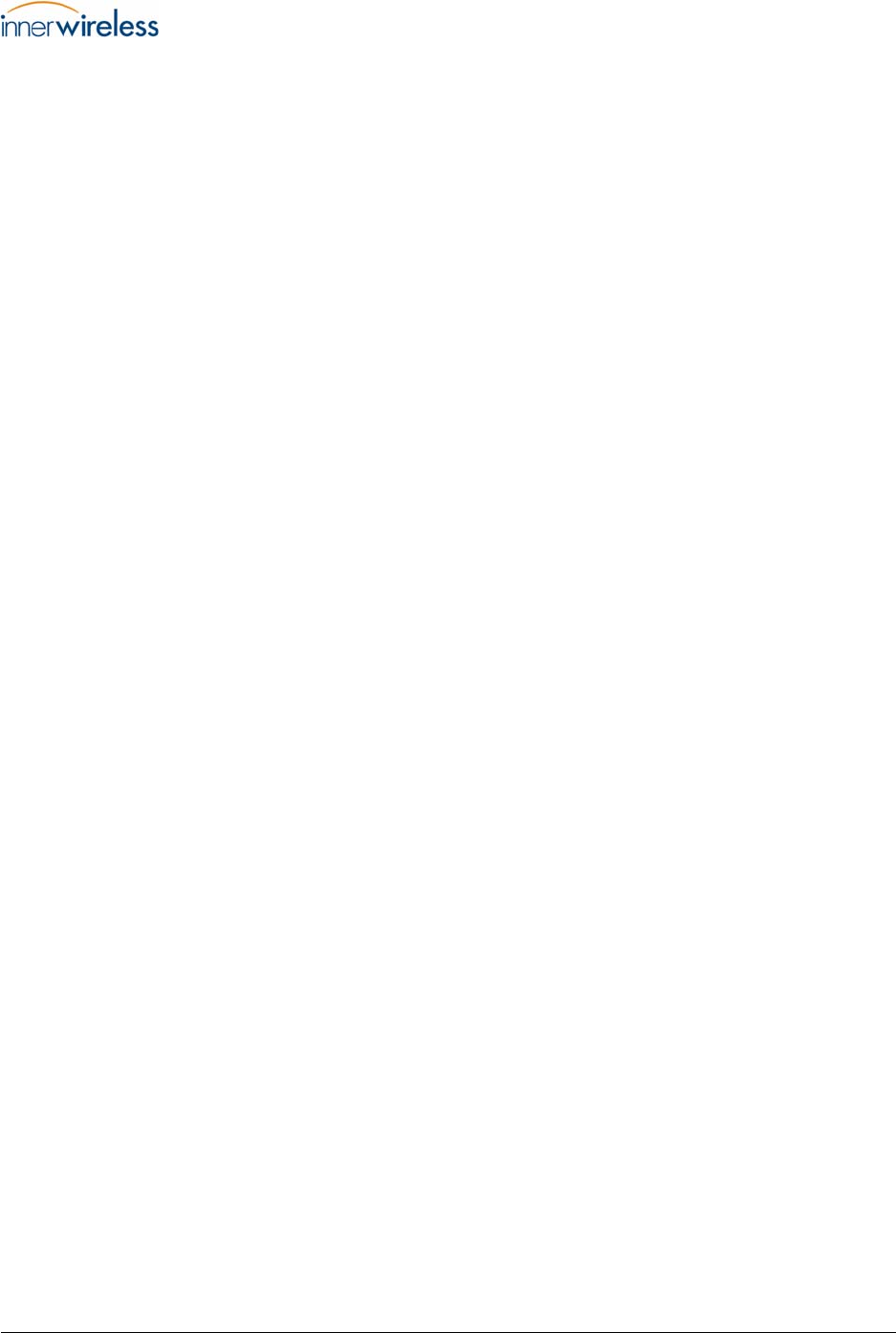
Spot RFLS User's Manual Page 17
11/6/2006
Appendix B – Beacon FCC Compliance Information
Beacon FCC ID: RO540001A001
This device complies with Part 15 of the FCC Rules. Operation is subject to the following two
conditions:
1. This device may not cause harmful interference, and
2. This device must accept any interference received, including interference that may cause
undesired operation.
This equipment has been tested and found to comply with the limits for a Class A digital device,
pursuant to Part 15 of the FCC Rules. These limits are designed to provide reasonable protection
against harmful interference when the equipment is operated in a commercial environment. This
equipment generates, uses, and can radiate radio frequency energy and, if not installed and used
in accordance with the instruction manual, may cause harmful interference to radio
communications. Operation of this equipment in a residential area is likely to cause harmful
interference in which case the user will be required to correct the interference at his own
expense.
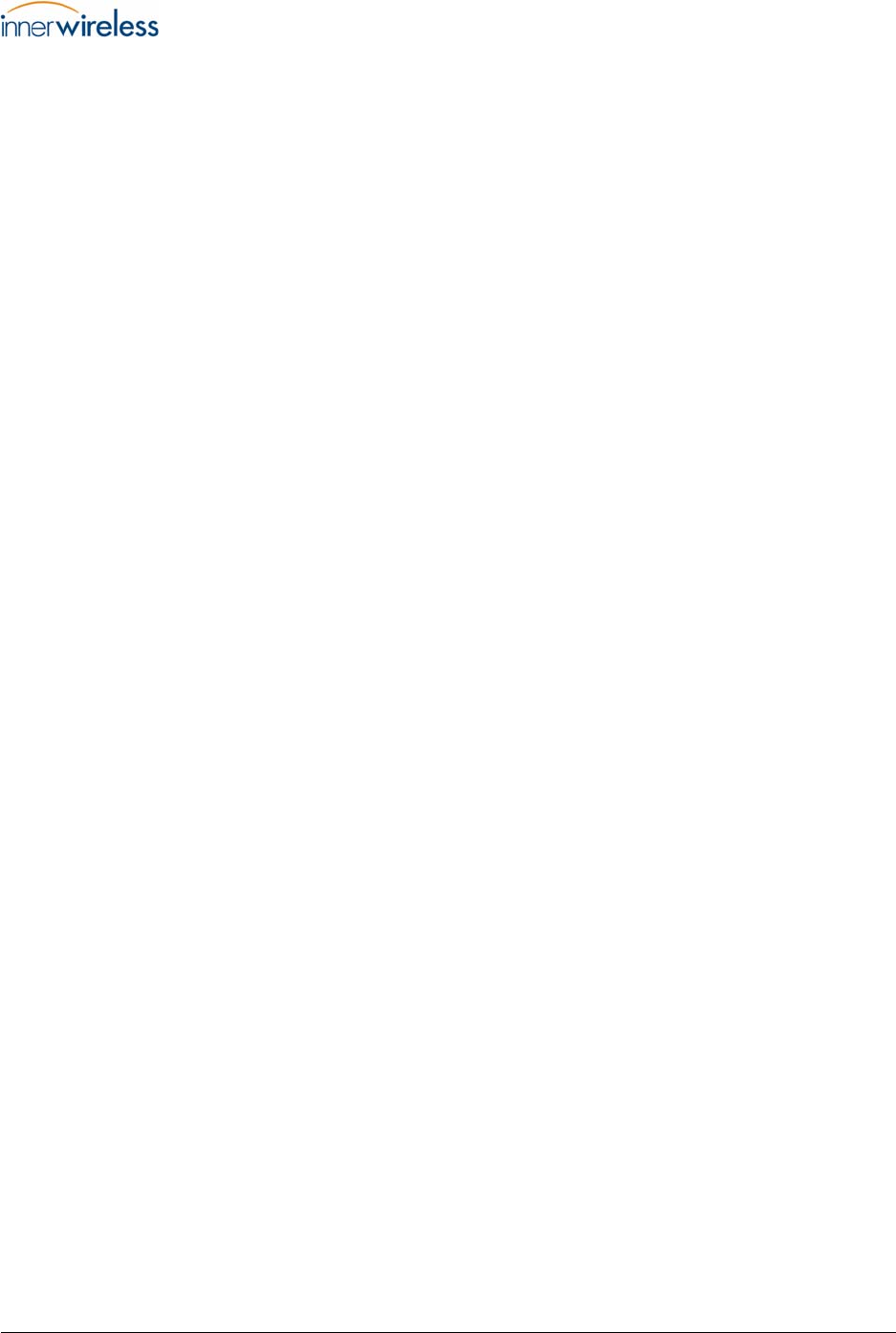
Spot RFLS User's Manual Page 18
11/6/2006
Appendix C – Tag FCC Compliance Information
Tag FCC ID: RO540002A001
This device complies with Part 15 of the FCC Rules. Operation is subject to the following two
conditions:
1. This device may not cause harmful interference, and
2. This device must accept any interference received, including interference that may cause
undesired operation.
This equipment has been tested and found to comply with the limits for a Class A digital device,
pursuant to Part 15 of the FCC Rules. These limits are designed to provide reasonable protection
against harmful interference when the equipment is operated in a commercial environment. This
equipment generates, uses, and can radiate radio frequency energy and, if not installed and used
in accordance with the instruction manual, may cause harmful interference to radio
communications. Operation of this equipment in a residential area is likely to cause harmful
interference in which case the user will be required to correct the interference at his own
expense.
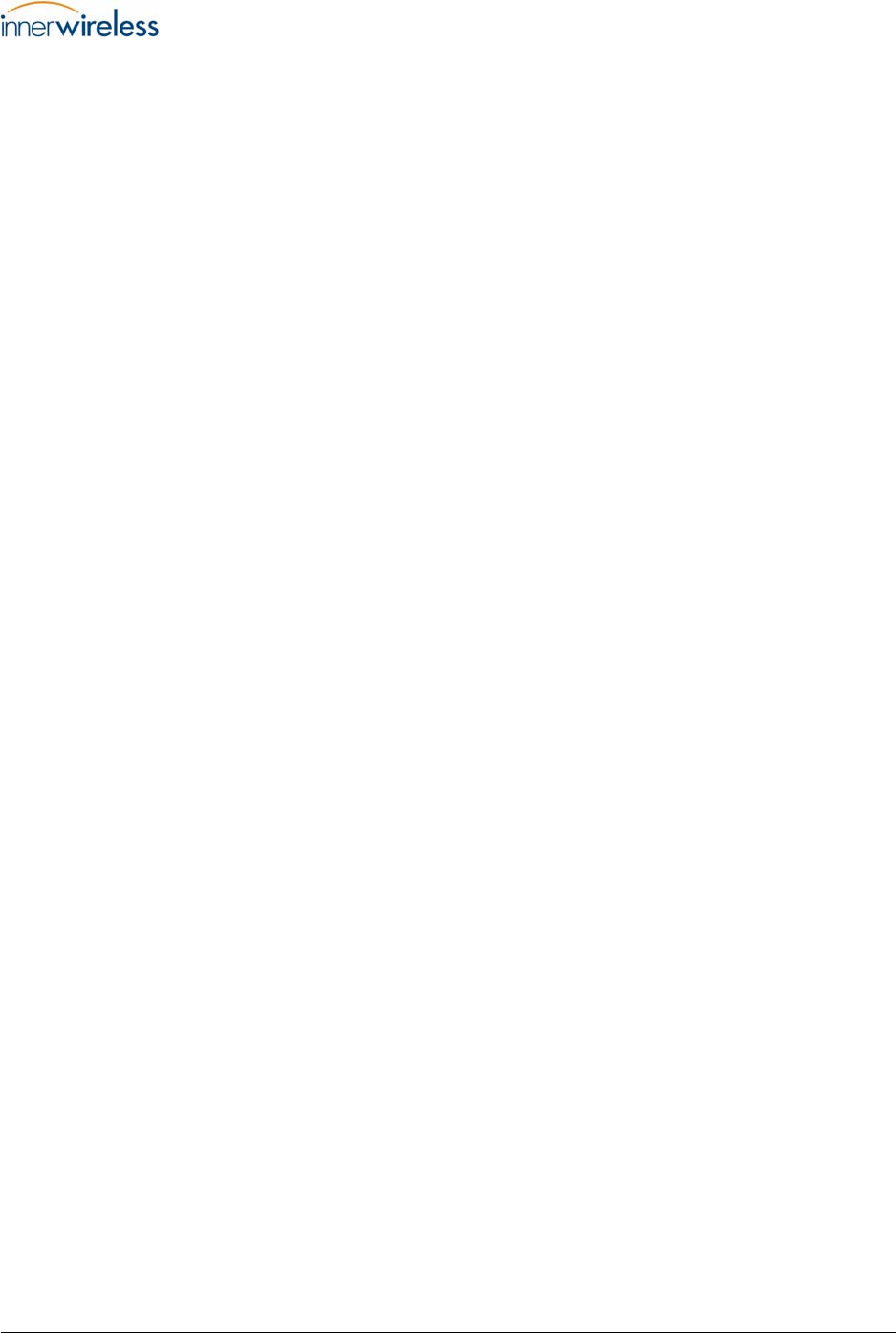
Spot RFLS User's Manual Page 19
11/6/2006
Appendix D – Antenna Specification
The Master Radio is FCC certified for use with an antenna that meets the following
requirements:
1. Maximum gain: 13.3 dBi
2. Type: monopole, omnidirectional
3. Nominal Impedance: 50 Ohm
FCC re-certification is required in order to use an antenna that does not meet the above
specifications.
— End of Document